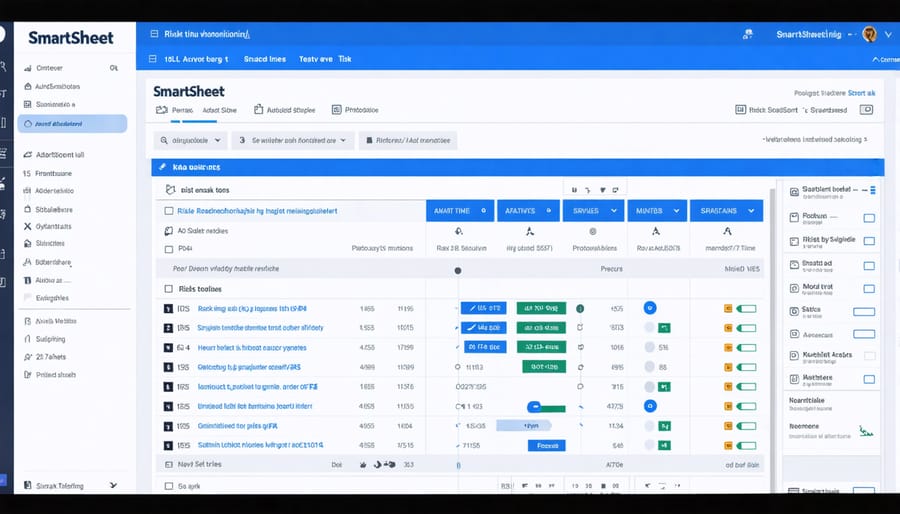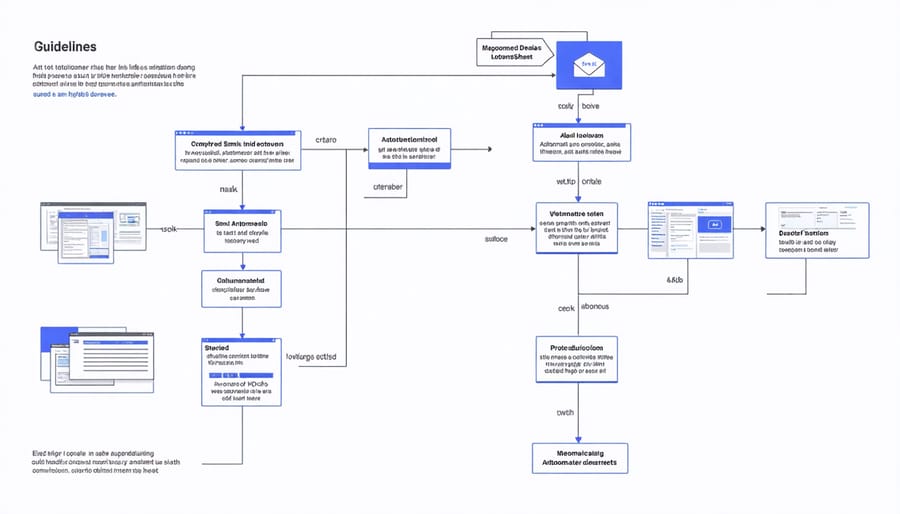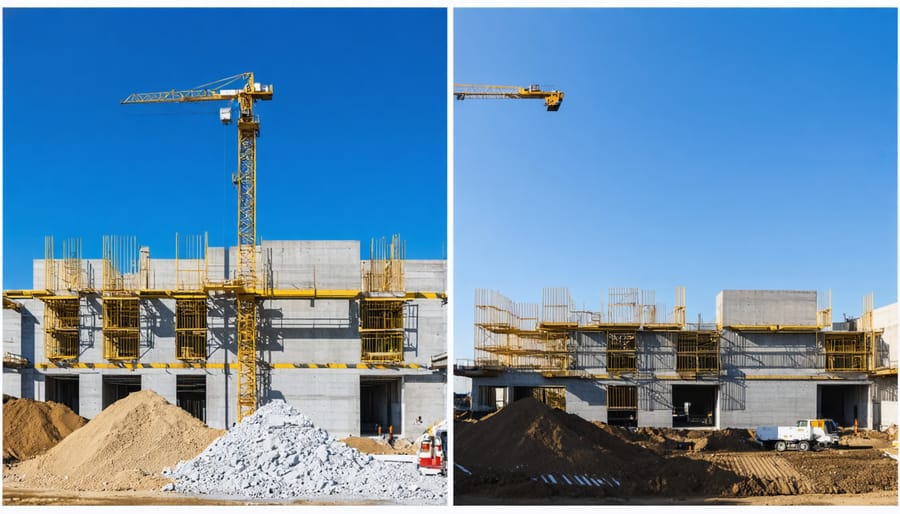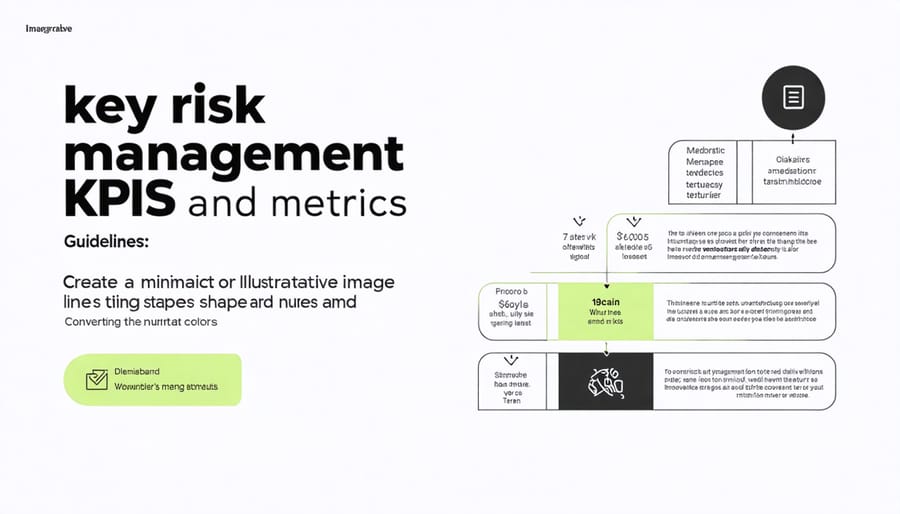Transform construction project management with Smartsheet’s integrated digital risk management solutions, enabling real-time collaboration and automated workflow optimization across multiple construction sites simultaneously. Industry leaders leveraging Smartsheet’s construction management capabilities report up to 40% reduction in project delays and 35% improvement in resource allocation efficiency. This cloud-based platform revolutionizes traditional construction management by centralizing critical documentation, automating compliance tracking, and providing instant visibility into project milestones, resource utilization, and potential bottlenecks.
Construction executives and project managers increasingly recognize Smartsheet as the cornerstone of modern construction management, particularly for its ability to integrate seamlessly with existing enterprise systems while maintaining strict security protocols. The platform’s powerful automation capabilities eliminate manual data entry, reduce human error, and ensure consistent communication across all stakeholders – from architects and engineers to contractors and suppliers. By implementing Smartsheet’s construction management framework, organizations can standardize processes, enhance accountability, and deliver projects on time and within budget while maintaining comprehensive audit trails for regulatory compliance.
Why Smartsheet is Revolutionizing Construction Risk Management
Real-Time Risk Monitoring and Analysis
Smartsheet’s real-time risk monitoring capabilities transform how construction teams identify, track, and mitigate potential issues throughout project lifecycles. The platform’s dynamic risk register allows teams to log and categorize risks according to severity, probability, and potential impact, providing instant visibility into project vulnerabilities.
Through customizable dashboards, project managers can monitor risk indicators in real-time, with automated alerts triggered when predefined thresholds are breached. This proactive approach enables swift intervention before minor issues escalate into major problems. The system’s built-in RAG (Red, Amber, Green) status indicators offer quick visual cues for risk assessment, while detailed analytics provide deeper insights into risk patterns and trends.
Collaborative risk assessment features enable stakeholders to contribute their expertise and concerns directly within the platform. Team members can attach supporting documentation, update risk status, and log mitigation actions, creating a comprehensive audit trail. The platform’s automated workflow capabilities ensure that critical risk-related tasks are assigned, tracked, and escalated appropriately.
Integration with other project management tools allows for consolidated risk reporting, while mobile accessibility ensures that team members can report and respond to risks from any location. Regular risk review meetings are supported through automated report generation and sharing capabilities, facilitating informed decision-making and strategic risk management across multiple construction projects.

Automated Risk Notification Systems
Smartsheet’s automated risk notification system transforms how construction teams monitor and respond to project risks. The platform enables the creation of customized alert mechanisms that trigger notifications based on predefined risk thresholds, schedule variations, or budget concerns. These automated workflows ensure that stakeholders receive timely updates when critical parameters deviate from established baselines.
Project managers can configure conditional rules that automatically notify team members when risk indicators reach specific levels. For instance, when material costs exceed budget allocations by a preset percentage or when deadline milestones are approaching, the system sends targeted alerts to relevant personnel. This proactive approach enables swift intervention before minor issues escalate into major problems.
The communication workflow can be tailored to follow your organization’s chain of command. When high-priority risks are identified, notifications can be automatically escalated to senior management, while routine updates are distributed to operational teams. The system also maintains a detailed audit trail of all notifications and responses, providing valuable documentation for project governance and compliance requirements.
Integration with mobile devices ensures that team members receive real-time alerts regardless of their location, facilitating rapid response to emerging risks. The platform’s ability to aggregate risk data and trigger automated notifications significantly reduces the likelihood of oversight and strengthens overall project risk management capabilities.

Implementation Strategies for Maximum Risk Mitigation
Custom Risk Assessment Templates
Implementing effective risk assessment templates in Smartsheet enables construction teams to systematically identify, evaluate, and mitigate potential project risks. Here’s how to set up customized risk tracking templates that align with industry best practices:
Start by creating a master template with essential columns including Risk ID, Risk Description, Risk Category, Probability, Impact, Risk Score, Mitigation Strategy, Owner, and Status. Configure conditional formatting rules to automatically highlight high-priority risks based on their risk scores, ensuring immediate visibility of critical issues.
For comprehensive risk monitoring, incorporate these key components:
1. Probability Matrix (1-5 scale)
– 1: Rare (< 10% likelihood)
- 3: Possible (40-60% likelihood)
- 5: Almost Certain (> 90% likelihood)
2. Impact Assessment Categories
– Schedule Delays
– Cost Overruns
– Quality Issues
– Safety Concerns
– Regulatory Compliance
Set up automated workflows to notify relevant stakeholders when risk levels change or new risks are identified. Utilize Smartsheet’s formula columns to automatically calculate risk scores by multiplying probability and impact ratings.
Include dedicated sections for:
– Risk Response Planning
– Contingency Measures
– Historical Risk Data
– Lessons Learned
To enhance collaboration, enable shared views for different stakeholder groups, allowing contractors, supervisors, and project managers to input and track risks according to their responsibility levels. Configure dashboard widgets to display risk metrics, trending data, and upcoming mitigation deadlines.
Remember to regularly review and update your templates based on project feedback and changing site conditions. This ensures your risk management system remains dynamic and responsive to evolving project needs.
Integration with Existing Project Management Systems
Integrating Smartsheet with existing project management systems is crucial for maintaining seamless workflow in construction projects. The platform offers multiple integration pathways that can be implemented through a systematic approach to ensure data consistency and operational efficiency.
First, evaluate your current technology stack and identify integration points. Smartsheet supports integration with common construction management tools through its Connect API and pre-built connectors. Key integration possibilities include BIM software, accounting systems, document management platforms, and scheduling tools.
For document management integration, Smartsheet’s attachment features can sync with popular platforms like Procore, PlanGrid, and BIM 360. This enables real-time document sharing and version control across platforms. Configure automated workflows to ensure documents are automatically updated across all connected systems when changes occur.
When integrating with financial systems, establish clear data mapping protocols. Smartsheet can connect with accounting software through custom API integrations or third-party middleware solutions. This allows for automatic budget updates, cost tracking, and financial reporting across platforms.
For scheduling tools integration, utilize Smartsheet’s calendar sync features and timeline views. These can be synchronized with Microsoft Project, Primavera P6, or other construction scheduling software to maintain consistent project timelines across all platforms.
To ensure successful integration:
– Conduct thorough testing before full implementation
– Establish clear data hierarchy and update protocols
– Train team members on cross-platform workflows
– Document integration processes and troubleshooting procedures
– Regularly audit system connections and data accuracy
Consider implementing a phased integration approach, starting with critical systems first and gradually expanding to other tools. This method allows for proper testing and adjustment of integration points while minimizing disruption to ongoing projects.
Create backup procedures and contingency plans for potential integration issues. Regular system checks and maintenance schedules will help prevent data synchronization problems and ensure consistent performance across all integrated platforms.
Case Study: Morrison Construction’s Risk Management Transformation
Morrison Construction, a leading commercial construction firm based in the Pacific Northwest, faced significant challenges in managing project risks across their multiple construction sites before implementing Smartsheet. Their previous risk management system, which relied heavily on spreadsheets and email communications, resulted in delayed response times, inconsistent reporting, and difficulty tracking risk mitigation efforts across projects.
In 2021, Morrison’s leadership team decided to transform their risk management approach by implementing Smartsheet as their central platform for risk identification, assessment, and mitigation. The implementation process began with a pilot program on three major commercial projects, valued at approximately $50 million each.
The company developed a standardized risk register template in Smartsheet, incorporating key elements such as risk probability, impact assessment, mitigation strategies, and responsible parties. The platform’s automated workflows were configured to notify relevant stakeholders when new risks were identified or when existing risks required immediate attention.
Key features implemented included:
– Real-time risk status dashboards accessible to all project stakeholders
– Automated notification systems for risk threshold breaches
– Standardized risk assessment matrices
– Interactive reports for executive review meetings
– Mobile access for on-site risk documentation
Within six months of implementation, Morrison Construction reported several significant improvements:
– 40% reduction in response time to identified risks
– 65% decrease in communication-related delays
– 30% improvement in risk mitigation effectiveness
– Enhanced visibility of risk patterns across multiple projects
– Improved stakeholder confidence due to transparent reporting
Project Manager Sarah Chen notes, “Smartsheet has transformed how we approach risk management. The ability to instantly update and share risk information has made our team more proactive rather than reactive. We’re catching potential issues earlier and addressing them more effectively.”
The success of the pilot program led Morrison to roll out Smartsheet risk management across all their projects by Q2 2022. The company also integrated their safety inspection protocols and quality control processes into the platform, creating a comprehensive risk management ecosystem.
One particularly notable achievement was during the construction of a 15-story office building, where the team identified and mitigated a potential structural issue through the early warning system built into their Smartsheet workflow. This early detection saved an estimated $300,000 in potential rework costs and prevented a possible three-week delay.
Morrison Construction’s risk management transformation demonstrates how strategic implementation of Smartsheet can lead to measurable improvements in project risk management, team communication, and overall project outcomes. Their experience serves as a blueprint for other construction companies looking to enhance their risk management capabilities through digital transformation.

Best Practices for Ongoing Risk Monitoring
Key Performance Indicators (KPIs) for Risk Assessment
Tracking risk management effectiveness in Smartsheet requires monitoring specific KPIs that provide actionable insights. Leading indicators include the percentage of identified risks with assigned mitigation strategies, average response time to risk triggers, and the number of proactive risk assessments completed per quarter.
Critical metrics focus on risk impact measurements, such as cost variance due to materialized risks, schedule delays attributed to unforeseen events, and the ratio of avoided risks to total identified risks. Project managers should monitor the risk mitigation success rate, calculated by comparing successfully mitigated risks against total risk events.
Financial KPIs encompass risk-adjusted project margins, insurance claim frequencies, and contingency fund utilization rates. Safety-related indicators include near-miss reporting frequency, incident rates, and safety compliance scores.
Smartsheet’s dashboard capabilities enable real-time tracking of these KPIs through customizable visualizations. Key performance thresholds can be set with automated alerts for deviations. Monthly risk assessment scores, derived from weighted risk factors, provide a comprehensive overview of project risk health.
For optimal risk management, track trend analysis of these indicators over time, maintaining a risk response effectiveness log that documents successful mitigation strategies and lessons learned from past events.

Regular Review and Update Protocols
Regular review and updating of risk management protocols in Smartsheet is crucial for maintaining effective construction project oversight. Establish a quarterly review schedule to assess and update risk matrices, ensuring they reflect current project conditions and emerging challenges. During these reviews, project managers should evaluate the effectiveness of existing risk mitigation strategies and adjust them based on performance data and lessons learned.
Create automated reminders within Smartsheet to prompt systematic reviews of risk registers and response plans. Implement version control for all risk management documents, maintaining a clear audit trail of changes and updates. This helps teams track the evolution of risk management strategies and ensures accountability.
Develop a standardized process for incorporating feedback from field teams and stakeholders into risk management updates. Use Smartsheet’s collaboration features to gather input from multiple sources, including subcontractors, suppliers, and site supervisors. Document all modifications in the platform’s change log, complete with justifications and approval workflows.
Consider establishing a risk management steering committee that meets monthly to review dashboard metrics and evaluate the need for strategic adjustments. This proactive approach helps identify potential gaps in risk coverage and ensures that risk management protocols remain aligned with project objectives and industry best practices.
Smartsheet has proven to be a game-changing tool for modern construction risk management strategies, offering unprecedented control and visibility over project risks. The platform’s ability to integrate real-time data, automate workflows, and facilitate collaborative risk assessment has demonstrated significant value across diverse construction projects.
As the construction industry continues to evolve, Smartsheet’s role in risk management is expected to expand further. The platform’s regular updates and improvements suggest a promising future where artificial intelligence and machine learning capabilities may enhance predictive risk analysis and automated response protocols. Industry leaders report up to 40% reduction in risk-related incidents and a 30% improvement in response times when utilizing Smartsheet’s comprehensive risk management features.
Looking ahead, the integration of IoT sensors, mobile technology, and advanced analytics will likely strengthen Smartsheet’s position as an essential tool for construction risk management. The platform’s adaptability to emerging industry needs and compliance requirements ensures its continued relevance in an increasingly complex construction landscape.
For construction professionals seeking to optimize their risk management processes, Smartsheet represents not just a current solution but a scalable platform that evolves with industry demands, making it a strategic investment for forward-thinking organizations committed to excellence in project delivery and risk mitigation.

